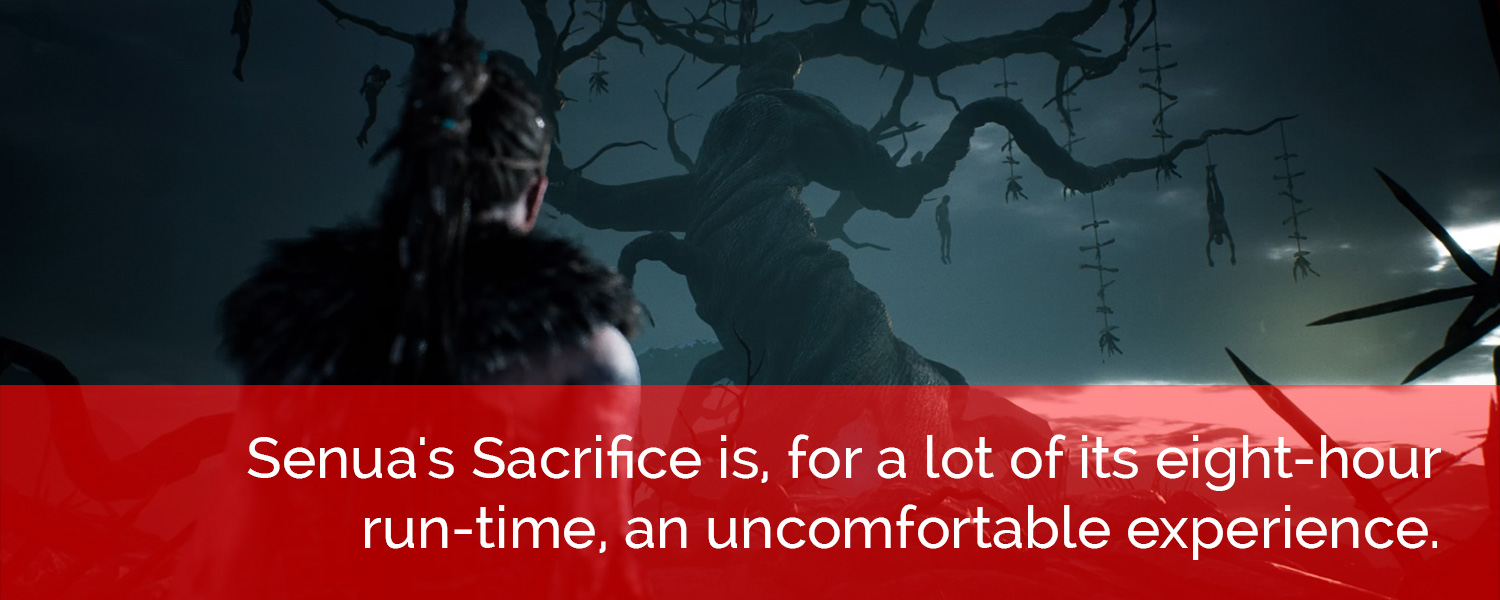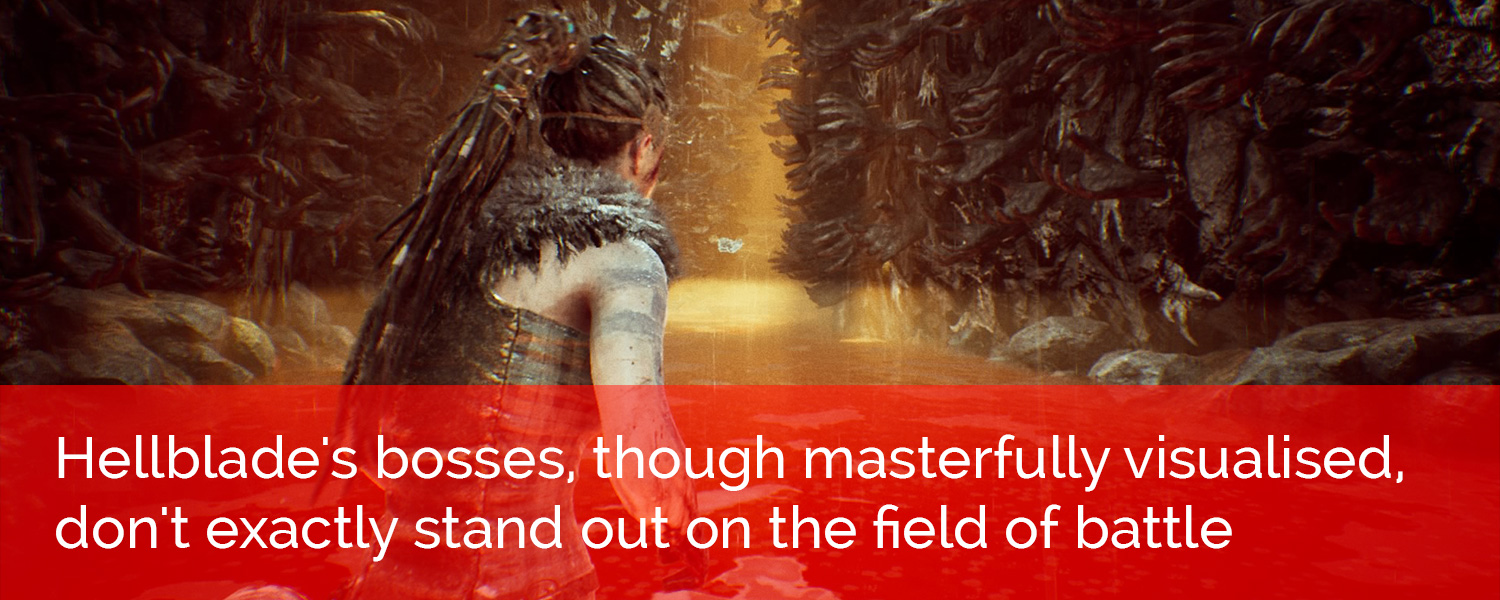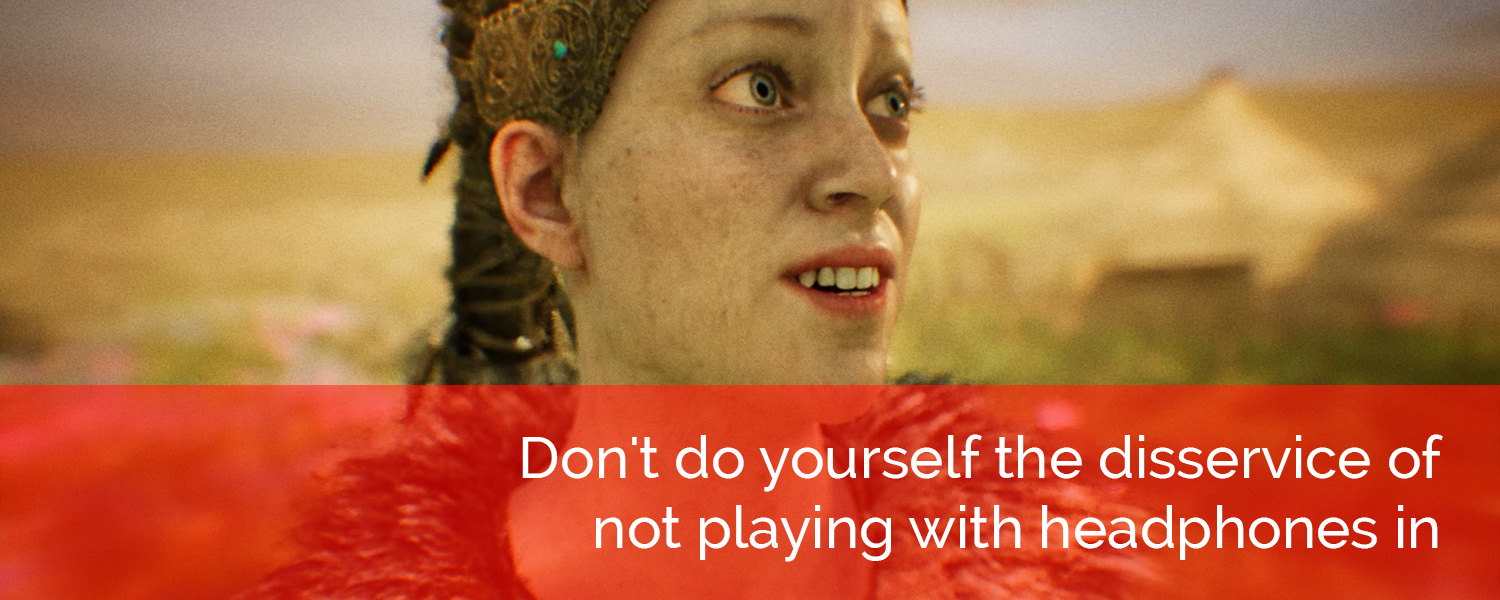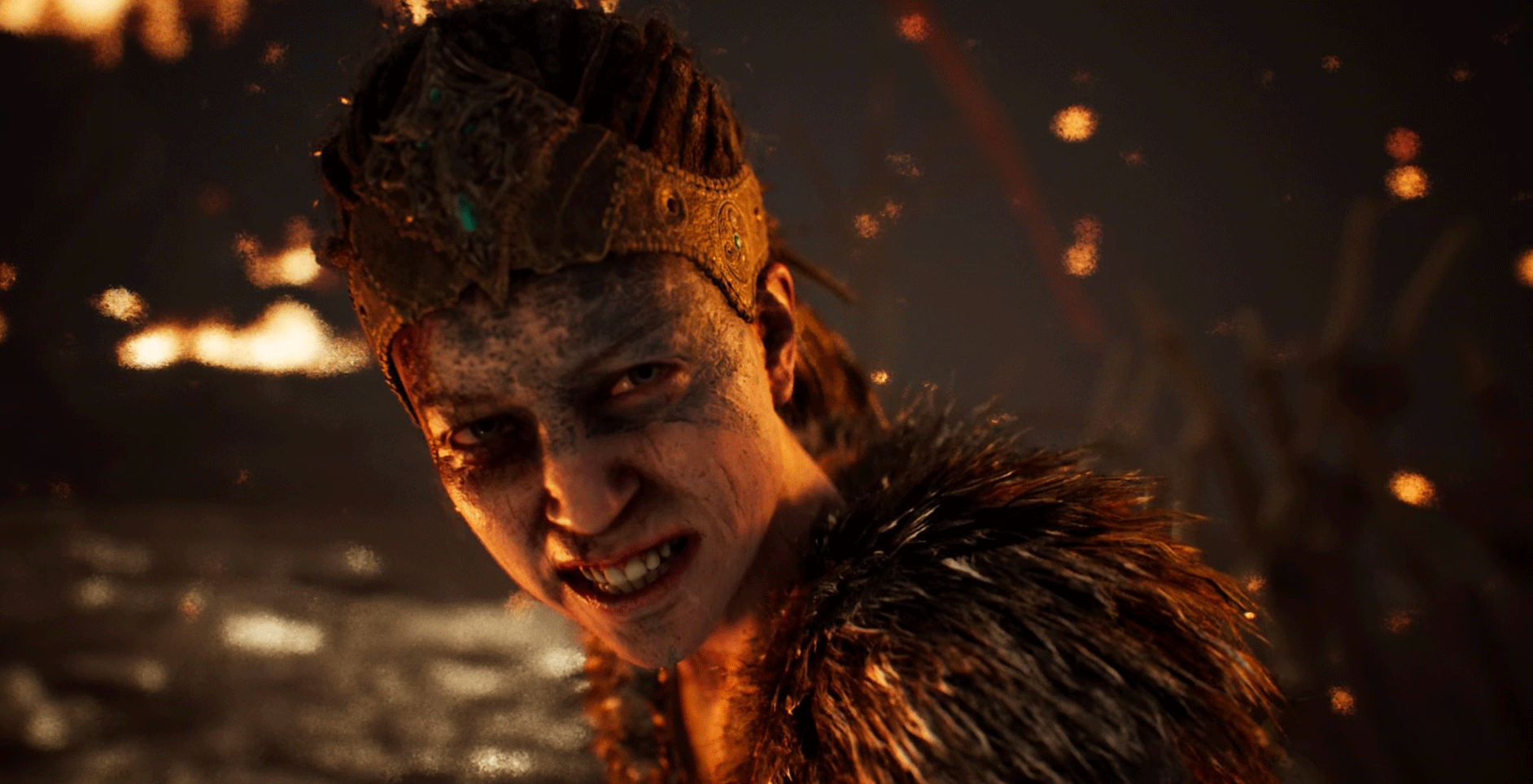In a world where mental illness is still very much a keep-hush conversational taboo, Ninja Theory must be applauded for tackling the issue with great passion and ferocity, placing it centre-stage in what is an incredibly hands-on medium. That’s before even considering Hellblade as a game. Hellblade, as a concept, is a huge step toward pulling back the veil and shining a light on something we’re all so complacent and ignorant toward.
So, before going any further, kudos to you men and women at Ninja Theory.
Senua’s Sacrifice is, for a lot of its eight-hour run-time, an uncomfortable experience. This Pict girl’s vision quest is a sensory onslaught thickly rooted in despair and a profound longing for redemption. As she journeys to rescue the soul of her departed lover, the Hel she scours is quite clearly of her own creation, as the psychotic manifestations and visions of her past continually rear up and deny her hopes of succeeding. Hellblade’s pacing is all over the shop during the game’s first act, but it manages to really pull things together for the remainder of Senua’s odyssey. I could never begin to know whether Ninja Theory has done justice to those suffering from these horrible afflictions, but given their work with world-leaders in the field coupled with their dedication to understanding the toll psychosis takes on the mind, I have no reason to doubt them. They pay respect to the subject matter and, through some trickery, force us to relate to Senua in ways we mightn’t have otherwise. A lot has been said of Hellblade’s permadeath mechanic, where each death causes the rot to creep toward Senua’s head, the result of which would wipe your progress. I found out after my playthrough that it’s simply not true, it’s a cunning bluff on Ninja Theory’s part. But I’d be lying if I said that a slight pang of anxiety didn’t creep in as I watched the rot consume Senua, piece by piece. It made me care which, I dare say, was their aim all along.
I could never begin to know whether Ninja Theory has done justice to those suffering from these horrible afflictions, but given their work with world-leaders in the field coupled with their dedication to understanding the toll psychosis takes on the mind, I have no reason to doubt them. They pay respect to the subject matter and, through some trickery, force us to relate to Senua in ways we mightn’t have otherwise. A lot has been said of Hellblade’s permadeath mechanic, where each death causes the rot to creep toward Senua’s head, the result of which would wipe your progress. I found out after my playthrough that it’s simply not true, it’s a cunning bluff on Ninja Theory’s part. But I’d be lying if I said that a slight pang of anxiety didn’t creep in as I watched the rot consume Senua, piece by piece. It made me care which, I dare say, was their aim all along.
Given their pedigree, I expected Hellblade to show off a deeply strategic combat system that might make games like Dark Souls blush. While that isn’t the case here, Hellblade’s swordplay is a whole lot of fun. There’s no bells and whistles as your only options to protect Senua are to either dodge, block or attack. There are times when Hellblade will throw a half dozen enemies at you at once, it’s in those moments that this simplicity pays off. The only downside is that coupled with a bullet-time like ‘focus’ mode, I felt too powerful and laid waste to Senua’s hallucinations with ease. There was no panic in the combat, even after the game throws its heavy hitters at you, it becomes a matter of timing. Much like in the Arkham games where, once figured out, fighting could nearly be done one-handed. Hellblade’s bosses, though masterfully visualised, don’t exactly stand out on the field of battle, either. There are subtle changes, but they can all be put down courtesy of the same methods you’ll use bashing through the remainder of Hellblade. Hellblade caught my attention very late in its development. Mere months before release, the Hela trailer debuted showing Senua, almost fetal on her side, arguing with herself as a horrifying figure lurched closer in the background. This was enough to capture my imagination and I’m thrilled to say that Hellblade is one of the most stunning games I’ve played. Its art direction, inspired largely by the aforementioned mythos, is something to behold and I only hope the screens I took during my run can do justice to it. It’s genuinely baffling to fathom that a team of only twenty people made this work of art. From the little details, like the sun gleaming in through a thicket of trees to the exceptional direction and cinematography during Senua’s intimate inner-monologues.
Hellblade caught my attention very late in its development. Mere months before release, the Hela trailer debuted showing Senua, almost fetal on her side, arguing with herself as a horrifying figure lurched closer in the background. This was enough to capture my imagination and I’m thrilled to say that Hellblade is one of the most stunning games I’ve played. Its art direction, inspired largely by the aforementioned mythos, is something to behold and I only hope the screens I took during my run can do justice to it. It’s genuinely baffling to fathom that a team of only twenty people made this work of art. From the little details, like the sun gleaming in through a thicket of trees to the exceptional direction and cinematography during Senua’s intimate inner-monologues.
Melina Juergens deserves a standing ovation for her turn as Senua. Asked to assume the role after working as a video editor, she steps up in an enormous way, delivering a captivating performance that’d make most professional actors blush and probably scream. Her natural, beautiful doe-eyed look adds a disarming innocence to Senua that makes her descent all the more heartbreaking. Couple that with her clear natural talent and we might have seen the birth of a star.

If you’re going to take a chance on Hellblade, don’t do yourself the disservice of not playing with headphones in. The game makes use of binaural audio, a recording technique that delivers three-dimensional sound. Given the game’s theme, having these voices literally ‘circling you’ really lends to the immersion and lets you further appreciate Senua’s plight. Before your time with Hellblade is up, said voices will guide you, deceive you and they’ll mock you. While the game’s soundtrack did offer up a melancholic triumph, accentuating the game’s tender closing moments, I think the rest of Hellblade’s sound design is the real triumph. Pursuing the God of Illusions through the woods, guided only by his haunting throat-chants, is something that sticks with you.



